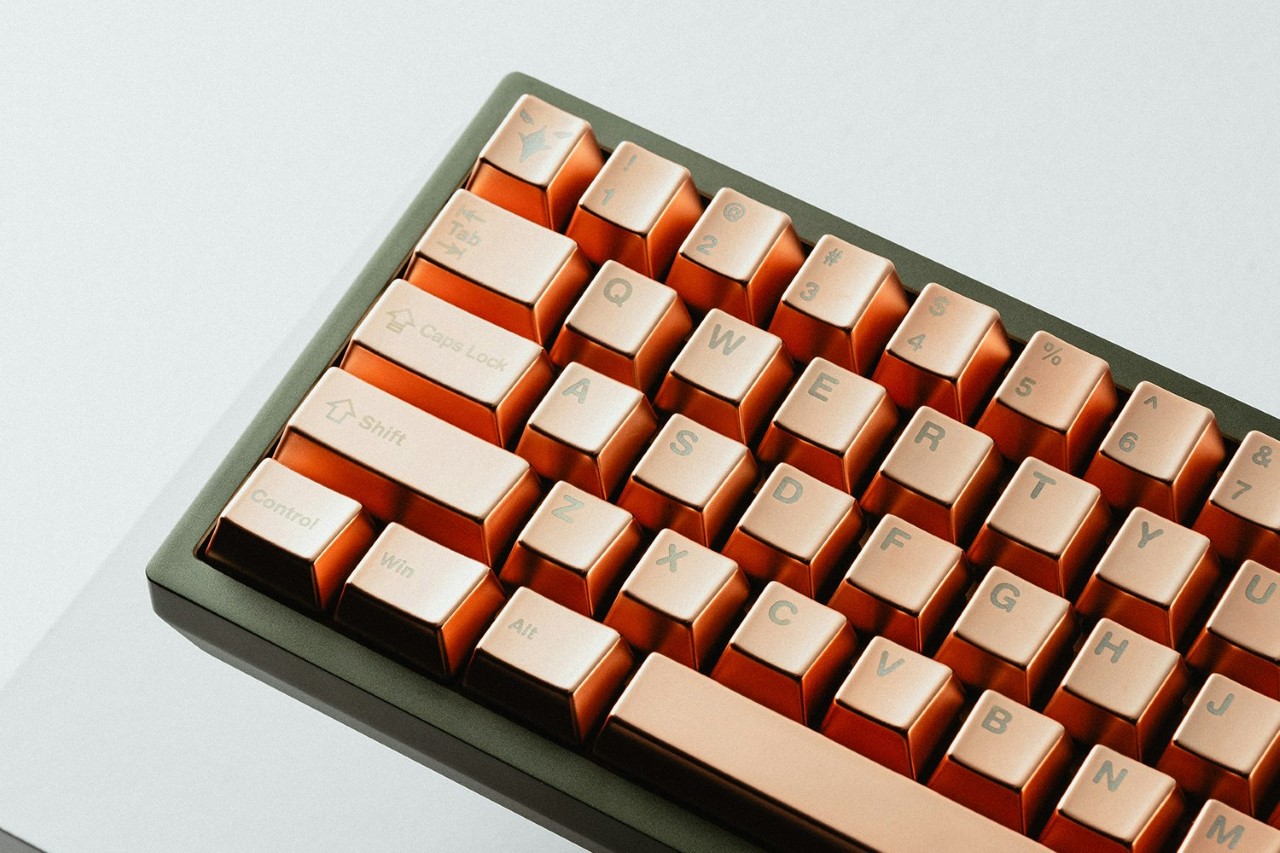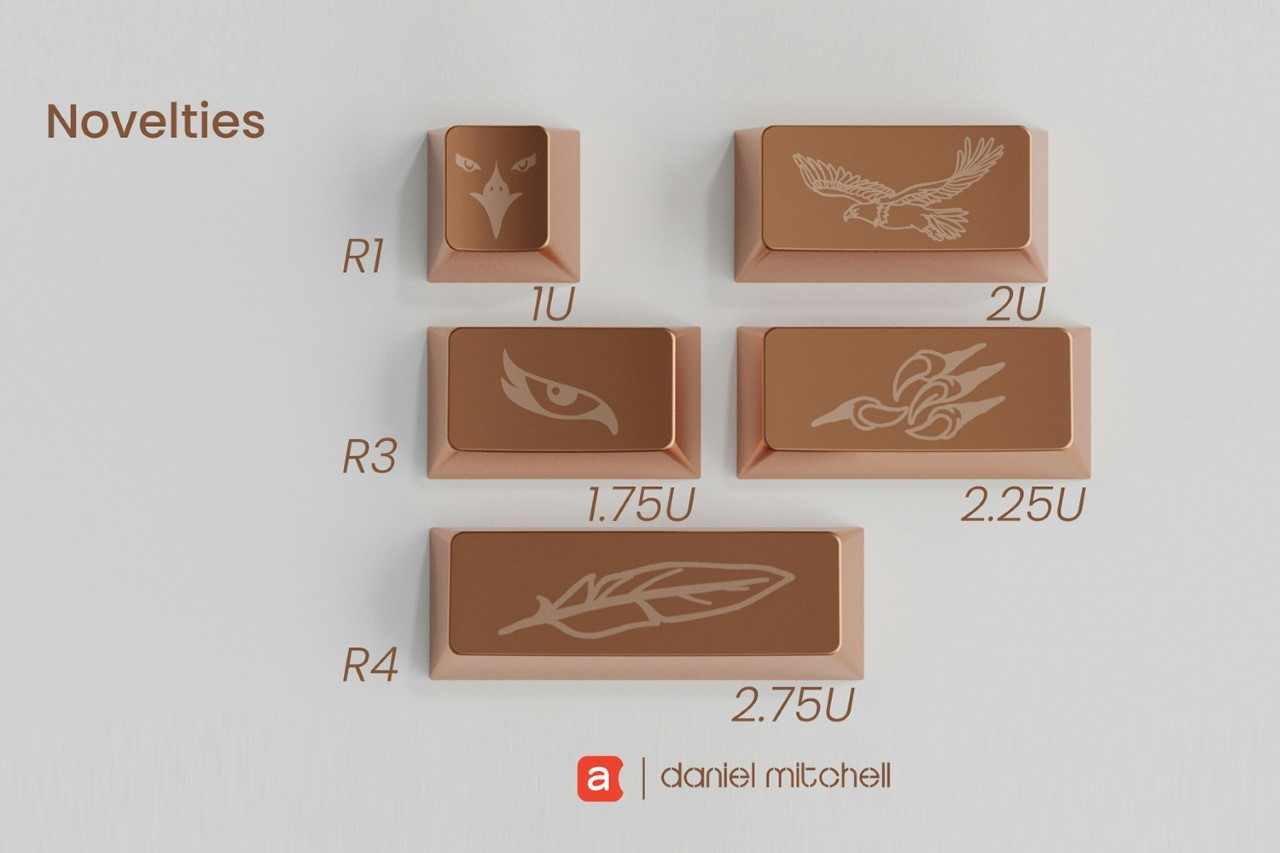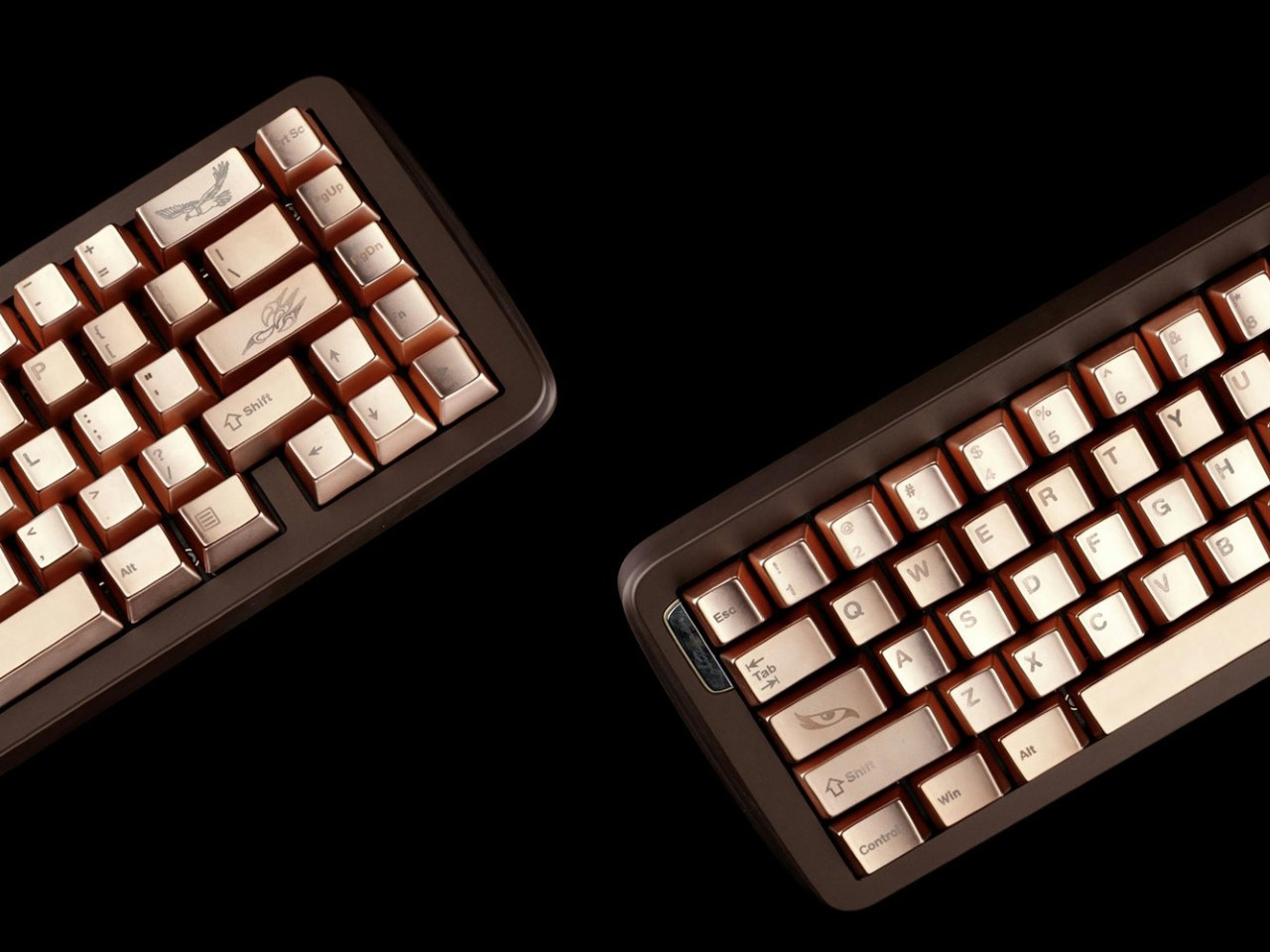Copper plays a VERY important role in electronics, but this might be the first time copper’s been used for its aesthetic properties. Meet the Awekeys Copper Eagle Keycap set – made from actual copper alloy to give your keyboard drip like no other. Sure, people boast about customizing the RGB backlight on their keyboards, but nothing really matches having your keys be made of actual metal. The Copper Eagle set sports keycaps machined from literal metal, giving them a heft and shimmery appeal that plastic wishes it had. Compatible with Cherry MX switches and clones, these keys attach to any supporting mechanical keyboard (no matter the size or style), giving it an audiovisual makeover. The keys offer the distinctly cool feel of metal, but start typing and you realize how much of a difference they actually make. The metal keycaps offer a distinct kind of sound that feels less like a plastic clatter and more like coins clinking against each other. It also helps that the keys make your keyboard look like a million bucks.
Designer: Awekeys


Crafted from recycled cupronickel, a material known for its strength and durability, the Copper Eagle set is a testament to Awekeys’ commitment to sustainable practices without compromising on quality. Each keycap undergoes a meticulous milling process before receiving its signature satin copper plating. This finish isn’t just visually appealing; it also lends a unique tactile sensation to every keystroke. The weight of the metal keycaps contributes to a substantial feel, while the copper’s natural warmth adds a touch of elegance to any setup.


Beyond aesthetics, the Copper Eagle set offers a sonic user experience that sets it apart. Metal keycaps are renowned for their ability to produce a deeper, more resonant click compared to their plastic counterparts. The Copper Eagle does so too, delivering satisfyingly rich auditory feedback that can be customized further with the right switch and keyboard combination. Along with just the cold tactile feel of the metal against your fingertips, the satisfying metallic click just elevates the keyboard’s UX to an entirely new level, eschewing the ‘fake’ plasticity of regular mechanical keyboards and replacing it with the premium appeal of metal.

One’s immediate concern with copper alloys (and glossy keycaps in particular) is the issue of fingerprints and patinas. A copper keyboard only looks classy if it maintains its sheen, and to address that, Awekeys actually coated each keycap with a nanocoating that prevents the metal from oxidizing or reacting to the oil and sweat from your fingertips. The keys should remain pristine and shiny for months with regular wiping down, although the durability of the coating over time is still something to be determined.


The Copper Eagle set comes in various kits to accommodate different keyboard layouts and preferences. The base kit consists of every key required for a 100% layout keyboard, but you can grab custom caps too, including different copper grades that have slightly different hues, and a few vanity keys featuring eagle imagery for your special keys like the enter, escape, backspace, etc.


The obvious caveat here is weight – copper weighs significantly more than plastic, so this should definitely make your keyboard feel considerably heavier than usual, but that’s only really a problem if you’re carrying your keyboard around. The second caveat, and a slightly smaller one, is that these keys (just like your regular mechanical keycaps) won’t support backlights. Most keyboards come with dual-plastic keys that allow the symbols to glow so you can see them in the dark – that’s not really possible with copper, so you’ll be relying entirely on muscle-memory here. The benefit, however, is that you’ll also own the coolest-looking keyboard among your friend circuits.


The post Actual Copper Keycaps from Awekeys turn your mechanical keyboard into an Ocean of Rose Gold first appeared on Yanko Design.





